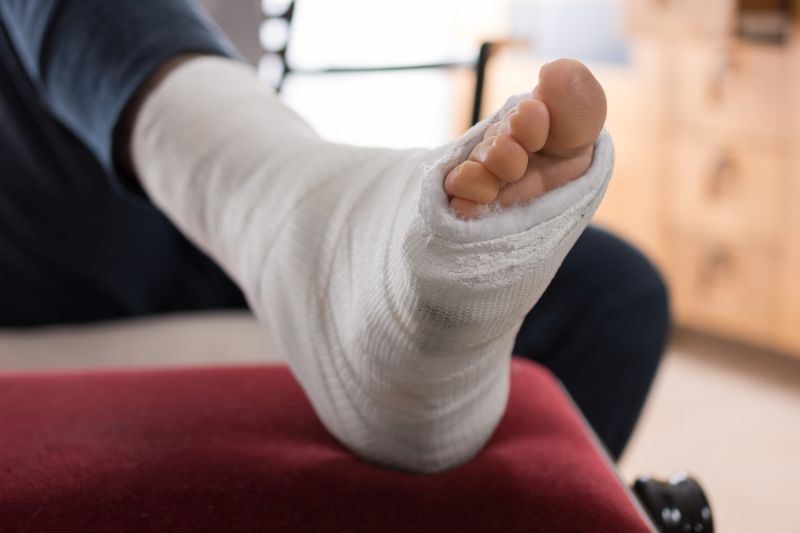 Human bones are robust, but they can and do break. Breaks can be caused by an external force higher than they can handle or when they have been weakened somehow, such as with osteoporosis. Some people may not realize they have a broken bone (especially hairline fractures) and, instead of seeking medical help choose to "tough it out." If you have any of these symptoms, you may have a broken bone: localized pain, bruising, swelling, or inability to move a body part. Seeking medical help to confirm a break is wise. It ensures proper action is taken to heal the bone successfully.
Human bones are robust, but they can and do break. Breaks can be caused by an external force higher than they can handle or when they have been weakened somehow, such as with osteoporosis. Some people may not realize they have a broken bone (especially hairline fractures) and, instead of seeking medical help choose to "tough it out." If you have any of these symptoms, you may have a broken bone: localized pain, bruising, swelling, or inability to move a body part. Seeking medical help to confirm a break is wise. It ensures proper action is taken to heal the bone successfully.
Types of Broken Bones
There are different types of bone fractures. The names originate from the break's shape, the number of fractured pieces, if bone fragments are displaced, or if the fracture broke through the skin. Here are fracture types and definitions.
- Stable fracture: the broken bone is still in alignment
- Incomplete fracture: the bone is only partially broken
- Greenstick fracture: a partially broken bone slightly bent out of shape (This type is common in young children because their bones are still growing and more flexible.)
- Complete fracture: a whole break in which the bone is in two pieces
- Comminuted fracture: high-impact trauma breaks the bone into more than two pieces
- Closed fracture (aka simple fracture): the bone does not pierce the skin
- Open fracture (aka compound fracture): the bone pierces through the skin
- Displaced fracture: a break requiring surgery, in which there is a gap between the two ends of the bone that must be closed
Treatment
Broken bones are very treatable, but the process depends on the break's location and severity. Treatment always requires complete immobilization of the affected area, in which a medical professional will put a cast or an immobilizing device around the broken bone. Hence, the fragments remain aligned for proper healing.
Sometimes broken bones require surgery, as in comminuted or open fractures, either by external or internal fixation. External fixation includes metal pins and screws being attached to an external stabilizer to keep the bone fragments in the correct position as they heal. Internal fixation is when bone fragments are repositioned and held in place with metal plates, screws, and rods. Depending on the fracture, the hardware is either removed or left in place.
Recovery Time
Depending on the break's area and severity, healing can take anywhere from weeks to months. It is sometimes critical for proper healing to engage in recommended physical therapy exercises to restore and maintain the strength, flexibility, and range of motion of the surrounding muscle.
Orthopedic Surgeon
Repairing broken bones are the specialty of orthopedic surgeons. Not all breaks require surgery, but having a specialist handle the repair ensures complete and successful recovery when they do. If you have any questions concerning the treatment of broken bones, contact Dr. Dan Albright. Call 919-863-6808 for an appointment today.





